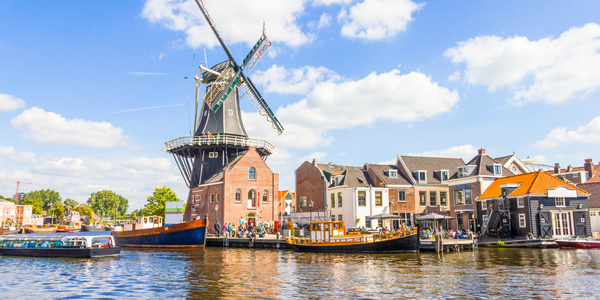Customer Company Size
SME
Region
- Europe
Country
- Sweden
Product
- OmniCube CN-2000
- Microsoft SQL Server
- Microsoft Windows servers
- Novell eDirectory and LDAP services
- Novell GroupWise collaboration software
Tech Stack
- Microsoft SQL Server
- Microsoft Windows servers
- Novell eDirectory and LDAP services
- Novell GroupWise collaboration software
Implementation Scale
- Enterprise-wide Deployment
Impact Metrics
- Cost Savings
- Productivity Improvements
- Digital Expertise
Technology Category
- Infrastructure as a Service (IaaS) - Cloud Computing
- Infrastructure as a Service (IaaS) - Cloud Storage Services
Applicable Industries
- Cities & Municipalities
Applicable Functions
- Business Operation
Services
- Cloud Planning, Design & Implementation Services
About The Customer
The customer in this case study is the municipality of Båstad, a seaside town in southern Sweden. The town is best known for hosting the annual Swedish Open tennis tournament. The municipality's Information Technology organization, which consists of a staff of eight, provides IT services for local government employees and operates the town's website. The municipality was looking to upgrade its outdated IT infrastructure and ensure continuous IT service availability in the event of catastrophes or equipment failures. The town decided to take advantage of a federal government disaster preparedness program to upgrade its IT systems.
The Challenge
The municipality of Båstad in Sweden was facing a challenge with its outdated IT infrastructure. The town's IT services were provided by a small team of eight, and the infrastructure was based on a mix of HP ProLiant servers and HP EVA and IBM Storwize v7000 SAN storage systems, all deployed in a single data center. This setup was vulnerable to disruptions in the event of power outages or major catastrophes such as floods or fires. The town decided to take advantage of a government disaster preparedness initiative to upgrade its aging IT systems and ensure business continuity and disaster recovery for its critical IT services.
The Solution
The municipality of Båstad issued an RFP for a next-generation data center with inherent business continuity and disaster recovery capabilities. After an extensive review process involving a number of vendors including Dell and NetApp, the municipality selected SimpliVity OmniCube hyperconverged infrastructure systems for its next-generation data center architecture. The OmniCube systems are deployed in separate locations in a high availability stretched cluster configuration to ensure continuous service in the event of equipment failures or disasters. The IT group centrally manages the distributed configuration using VMware vCenter. With the radically simplified infrastructure, the group no longer has to rely on outside consultants for ongoing support and maintenance assistance.
Operational Impact
Quantitative Benefit

Case Study missing?
Start adding your own!
Register with your work email and create a new case study profile for your business.
Related Case Studies.

Case Study
Turning A Stadium Into A Smart Building
Honeywell created what it called the “intelligent system” for the National Stadium in Beijing, China, turning the venue for the opening and closing events at the 2008 Summer Olympics into a “smart building.” Designed by highly controversial artist Ai Weiwei, the “Bird’s Nest” remains one of the most impressive feats of stadium architecture in the world. The 250,000 square meter structure housed more than 100,000 athletes and spectators at a time. To accommodate such capacity, China turned to Honeywell’s EBI Integrated Building Management System to create an integrated “intelligent system” for improved building security, safety and energy efficiency.
.png)
Case Study
Smart Street Light Network (Copenhagen)
Key stakeholders are taking a comprehensive approach to rethinking smart city innovation. City leaders have collaborated through partnerships involving government, research institutions and solution providers. The Copenhagen Solutions Lab is one of the leading organizations at the forefront of this movement. By bringing together manufacturers with municipal buyers, the Copenhagen Solutions Lab has catalyzed the development and deployment of next-generation smart city innovations. Copenhagen is leveraging this unique approach to accelerate the implementation of smart city solutions. One of the primary focus areas is LED street lighting.

Case Study
Buoy Status Monitoring with LoRa
The Netherlands are well-known for their inland waterways, canals, sluices and of course port activities. The Dutch Ministry of Infrastructure indicates that there are thousands of buoys and fixed items in and near water environments that would profit from IoT monitoring. One of the problems with buoys for example, is that they get hit by ships and the anchor cable breaks. Without connectivity, it takes quite some time to find out that something has happened with that buoy. Not to mention the costs of renting a boat to go to the buoy to fix it. Another important issue, is that there is no real-time monitoring of the buoys at this moment. Only by physically visiting the object on the water, one gains insight in its status.

Case Study
Barcelona Case Study
Barcelona’s heavy traffic and its associated high levels of pollution were the primary factors that motivated some companies and universities to work on strategies for improving traffic in the city centre. Bitcarrier is one of the technologies involved in the In4Mo Project, whose main objective is to develop the applications that form the core of smart mobility, one of the fundamental pillars of the smart city concept.

Case Study
China Mobile Smart Parking
Smart Parking, powered by NB-IoT technology, is making it easier for drivers to find free parking spots. Cities can better manage their parking assets and maximize the revenue available to them as a result. Drivers searching for parking create congestion and pollution by circling and hunting for available parking. Smart Parking services are able to significantly ease these problems by guiding a driver directly to a parking space.




---nyse--hpe_1.jpg)



